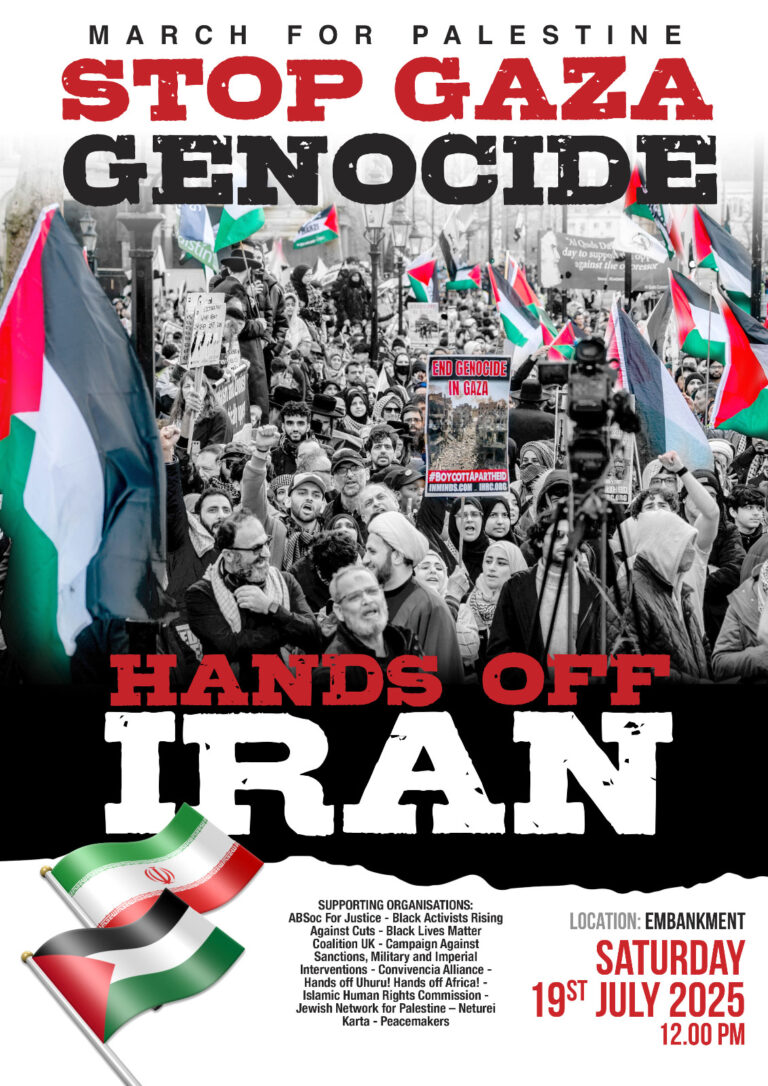This submission concerns the status and treatment of Muslims by the government of Belgium since the last UPR in May 2011. Among the things highlighted in that UPR was a resurgence of Islamophobia and the prevalence of racist attitudes against Muslims, Roma and migrant workers. The UPR recommended that the Belgian authorities increased the effectiveness of measures to prevent racism, xenophobia and Islamophobia and lift the ban on wearing headscarves in schools.
Muslims comprise approximately 6-7% of Belgium’s total population of around 11 million making them the country’s biggest religious group after Christianity. Their presence in significant numbers largely harks back to the 1960’s when immigrants arrived as guest workers, mainly from Morocco and Turkey, later inviting their families to come and join them. Their geographic distribution is uneven with the highest proportion concentrated in the metropolitan area of the capital Brussels where they form around 25% of the city’s residents.
Religious freedom
Concerns in this area have been dominated by the legal restrictions imposed by the government on the wearing of attire that covers the hair (such as the headscarf) or the whole head (such as the burqa or niqab worn by some Muslim women).
The ‘Law of June 1st 2011 on the introduction of a ban on the wearing of clothing that partly or completely covers the face’, renders it an offence to publicly “cover or conceal one’s face in whole or in part, so that one is unrecognisable”.
Although the law does not explicitly mention the niqab or burqa and is framed so as to present it as a security necessity, it is widely believed that it is almost exclusively directed at Muslim women for whom covering of the head/face is a religious obligation. The new law gave national effect to increasing local government legislation – in several districts under old local laws originally designed to stop people masking their faces completely at carnival time.
The stated rationale for the Act was that it intends to guarantee public safety. Other stated purposes include considerations of a societal nature, including “promoting ‘living together'”, with an emphasis on communication and recognisability, and protecting women’s rights.
In 2012 the Belgian Constitutional Court rejected appeals against enforcement of the ban and ruled that it did not violate human rights. Several appeals had been filed with the Belgian Constitutional Court. Applicants argued that the prohibition violated several rights and principles, including the principle of legality, the freedom of religion, and the right to non-discrimination. Before the law was passed, the burqa was already banned in several districts under old local laws originally designed to stop people masking their faces completely at carnival time.
IHRC believes the decision represents a major setback in efforts to establish justice and equal rights for Muslim women and uphold the principle of freedom of religion. In our view it directly violates the European Convention on Human Rights particularly in respect of freedom of religion and individual privacy. The decision is also discriminatory in that it supports a law that, notwithstanding its text, in intent and application is clearly directed at Muslim women.
We do not accept the court’s conclusion that the stated purposes of the law are legitimate and proportionate in as far as they seek to protect public safety. The face-veil may well be used as an instrument of disguise by people intending to commit criminal or injurious acts, but that is true of any kind of face covering, including those for which the law makes exceptions. Indeed prior to the introduction of the law, separate legislation already allowed for identity checks to be performed by the police. It is hard to see why this would be deemed insufficient from a public safety perspective. Moreover, most types of face covering pose no security risk whatsoever. And it seems rather unrealistic to assume that those who intend to rob a bank would refrain from doing so out of fear of committing the additional infraction of wearing a mask in public.
We also cannot share share the Court’s opinion that the face-veil violates the aim of social cohesion or ‘living together'(‘le vivre ensemble’). In defining this the Belgian legislator referenced the French philosopher Emmanuel Levinas who has stated that “our humanity is expressed through our face”. The legislator moreover declared that a person of whom only the eyes are visible would be “unable to participate in democratic dynamics”.
This is a very narrow and Euro-Centric interpretation of living together. It also impinges on the individual’s right to privacy in that it imposes a minimum STATE requirement of the degree and manner of communication to which a person must conform in public. The criminalisation of non state-
sanctioned contact is also problematic. Even if one were to consider it a legitimate purpose to promote such contacts, criminal punishment does not seem a proportionate means of achieving this.
IHRC also objects to the Court’s recourse to gender equality in justifying such a ban. Firstly, the Court states that the law will help those who are coerced into wearing the face-veil. We find this opinion to be symptomatic of the rise in Islamophobia in Belgium whereby fundamental rights such as the freedom to practice one’s religion are being interpreted not as a positive affirmation of ideals but in opposition to and as a direct rejection of Islamic values. The idea that Muslim women need emancipating from the assumed oppressive patriarchal structures of Muslim societies is as colonial as it is inaccurate.
The Constitutional Court also justified the law in instances where wearing the face-veil is a “well-considered choice by the woman”because (a) the requirement to wear such clothing is limited to women, and (b) the face-veil serves to deprive its wearers “of a fundamental element of their individuality”. The Court thus accepts that the legislator can or even should ’emancipate’women against their own well-considered and informed opinion.
Again this flies in the face of women’s own justifications for wearing the face veil. The available empirical research in this field overwhelmingly suggests that the women who are affected by the ban (in the Netherlands, France, Denmark and Belgium) experience the full-veil not as something that deprives them of their individuality, but instead as a means to express their individuality. The idea that Muslim women need emancipating from the assumed oppressive patriarchal structures of Muslim societies is as colonial as it is inaccurate.
The effect of the law is that on a day to day level Muslim women who believe strongly in wearing the face-veil are denied the opportunity to avail themselves of employment or other economic and social opportunities, even simple things such as going shopping or walking in the park. More worryingly the ban has the potential of harming Muslim women whom it may discourage from seeking medical or emergency assistance because it involves going outside.
While the face-veil is subject to a nationwide ban, wearing headscarves of the type worn by Muslim women to cover their hair is restricted by local legislation. In recent years several municipalities have introduced restrictions on council employees wearing headscarves at work. They have also been followed by many schools which have banned pupils from attending in such attire. Individual public schools have the right to decide whether to impose a ban on religious attire or symbols such as headscarves. Many public schools have policies restricting headscarves. At least 90 percent of public schools sponsored by the Francophone community continue to ban headscarves. Likewise, virtually all Flemish public schools continue to ban headscarves, and only a handful of Brussels schools allow the headscarf.
The ban disproportionately impacts on female Muslim students. As a result many children have been relocated to schools where headscarves are still permitted. Others have been forced to comply with the ban in order to receive an education. Some pupils have challenged the decision in the courts with some degree of success.
IHRC is encouraged by recent decisions by the Belgian Council of State, the country’s highest administrative court after cases were brought first by two Muslim girls whose school in Dendermonde imposed a hijab ban and more recently by a Sikh pupil in Sint-Truiden who was prohibited from wearing a turban to school. In both instances the court ruled that the ban violated the right to freedom of expression and religion. However, the court’s decision is only binding on the schools in question and not across the country or region which has allowed the authorities to maintain the general prohibition of religious symbols.
The importance of the Belgian government adopting a uniform national anti-discrimination policy covering the whole country was highlighted on 29 May 2015 when 30 Muslim students were sent home from the l’Institut De Mot-Couvreur in Brussels because their skirts were deemed to be too long. The school had previously provided a notice of regulations to students, which stated that “the wearing of baggy pants, long skirts or dark dresses, and skirts or dresses over pants is not tolerated.” The incident confirmed that the hijab and niqab ban has empboldened officials to further discriminate against Muslims by extending the logic that underpins it to other aspects of their personal life.
The ban on headscarves for employees of municipal authorities remains in place in several parts of Belgium. Their stance has also given the green light to private companies to adopt the policy aggravating the plight of Muslim women. As a result Muslim women have been forced to take off the hijab as a pre-requisite to finding work and many of those already in work have been left with no choice but to remove it in order to stay in employment.
Still others have been forced out of the labour market altogether because they cannot contemplate not wearing a hijab outside the home. Again, challenges have arisen which should provide cause for optimism. Although the rulings apply only to the companies in question they should provide a touchstone for the local and federal authorities to revise their own hijab bans. However this has not happened.
Moreover the rulings are limited in scope and do not offer adequate protection. In January 2014, the Belgian branch of the Dutch department store chain HEMA lost a wrongful termination lawsuit filed by a Muslim shop assistant whose contract was not renewed because she refused to stop wearing a hijab. The woman had been employed as temporary sales staff for two months, during which time she wore the hijab at work. But when customers complained, the store manager asked her to remove the headscarf.
After she refused to comply, HEMA declined to extend her contract in sales, and moved her to an alternative job in its warehouse, where she would not have direct contact with clients. The employee said the alternative job offer was unsatisfactory. An employment court ruled that because HEMA did not have a clearly stated policy on headscarves it had no valid justification to dismiss the woman.
The ruling, while providing restorative justice to the employee, is clearly unsatisfactory in that it leaves the way open in Belgium for companies to lawfully impose headscarf bans.
Discrimination
The constitution and other laws and policies protect religious freedom. The law prohibits discrimination based on religious or philosophical orientation. Federal law prohibits public statements that incite national, racial, or religious hatred.
The government provides financial support for certain officially recognised religious groups. These groups receive subsidies such as payment of clergy salaries, maintenance and equipment for facilities and places of worship, and tax exemptions.
In 2012 recognised religious groups received approximately 645 million euros ($888 million) in official subsidies in 2012. A 2011 study of total public support at all levels of government (including tax exemptions or payment of wages and pensions) to religious groups noted that approximately 86 percent went to the Catholic Church and two percent to Muslim groups, although the population was approximately 50 percent Catholic and 6 percent Muslim. The government continues to give a greater proportion of funds to the Catholic Church and a smaller proportion to Muslim and other religious groups than their corresponding percentages of the population.
City and town administrations continue to withhold approval or were slow to approve construction of new mosques and Islamic cultural centres.
The European Network Against Racism’s (ENAR) 2012/13 Shadow Report on racism and discrimination in employment in Europe reported that in Belgium
unemployment rates are three times higher for people born outside the EU than for the native-born population. The fact that employment statistics cannot be broken down according to religion makes it difficult to accurately quantify the extent of workplace discrimination against Muslims.
However because Muslims are more likely to be born outside the EU and make up a large proportion of the non native-born population they are likely to be disproportionately represented in this cohort.
In 2012, the most recent year for which data were available, the CEOOR received 265 complaints of religious discrimination, representing a 33 percent increase compared to 2011. Eighty-three percent of the complaints concerned Muslims. Twenty-one percent were employment-related. The CEOOR (Centre for Equal Opportunity and Opposition to Racism) is an independent but publicly funded agency responsible for litigating discrimination cases, including those of a religious nature.
Official discrimination against Muslims is also rising. After several years of providing a city-run temporary slaughterhouse to allow Muslims to sacrifice sheep on the first day of Eid al-Adha in sanitary conditions local authorities in the city of Antwerp decided against offering the service again in 2015.
Social and political climate
There is evidence to suggest disturbingly high rates of social and political prejudice towards Muslims. A February 2014 study by the Flemish daily De Morgen in Antwerp and Ghent indicated that one in three residents of the region of Flanders had a completely negative view of Muslims and almost one in five believed that many Muslims were criminals. One-fifth of the respondents thought Muslims should be prohibited from practising their religion.
Right wing parties continue to enjoy popularity and use anti-Islamic sentiment in their political campaigns. For example the far right VlaamsBelang used a poster depicting a woman’s leg to equate compliance with skirt length with adherence to Islam. In the poster, entitled “Freedom or Islam,” the leg was demarcated at various levels to express alleged compliance with sharia dress code. The lengths ranged from “Sharia Compliance” to “Moderate Muslim,” culminating in “Whore,” “Rape,” and “Stoning.”
The media continues to ‘otherise’ Muslims by generating and fanning Islamophobia with its de rigeur depiction of Muslims through the prism of
crime, terrorism, immigration and civilisational inferiority. Of the 265 complaints of religious discrimination received in 2012 by the CEOOR, 45% related to the media.
Recommendations
1) Belgium should overhaul its commitment to anti-discrimination so as to remove the anomaly that leaves Muslim women discriminated against and excluded.
2) IHRC recommends urgent training of equal opportunities officers in official bodies in (a) how the various ‘religious symbols’ bans violate Convention on the Elimination on all forms of Discrimination Against Women and other rights based conventions and covenants, (b) the impact such discrimination has had on Muslim women.
3) The claim that the anti-headscarf and niqab laws protect women’s rights and their human rights is both ethno-centric and inaccurate. This imposition of a western view of women’s empowerment actually disempowers women of colour and Muslim women especially. There is also no basis to the Belgian authorities’ claim that wearing the headscarf or niqab affects social cohesion negatively. IHRC recommends the Belgian government initiate dialogue with Muslim women’s NGOs and civil society groups that have worked on this issue in order to effect actual cohesion, rather than promote ‘cohesion’ as a racialised concept.
4) IHRC urges the OHCHR to impress upon the Belgian authorities to refrain from stereotyping and work instead to develop robust anti-discrimination policies. IHRC urges OHCHR to stress that irresponsible comments by ministers and politicians have led to increased demonisation and contributed to creating policies that marginalise and discriminate against Muslim women.
5) Muslim women must be allowed to participate in civic duties regardless of their choice of apparel.
6) IHRC recommends that the bans by public authorities and government bodies be lifted to allow, women greater access to political life, and to ensure that concepts of human rights including religious freedom and the rights of women are promoted through awareness raising. In the short term there must be a focus on training government members and workers about diversity and inclusion.
7) All clothing bans affecting students and teachers must be lifted. The same intervention that has seen authorities try to issue bans should be invoked to remove the bans.
8) The ban on public sector workers / government employees from wearing religious symbols, hitherto argued to be based upon enforcing neutrality, should be lifted. A less racialised understanding of anti-discrimination needs to be taken on board by the Belgian government, and this needs to be transmitted to equalities bodies and public institutions. In this respect the government of Belgium could easily adopt the considerations underlying the recent rulings of the Belgian Council of State on the wearing of religious symbols.
9) The government of Belgium should take immediate and effective measures to record the religious affiliation of all its residents to enable it to properly record the extent of religious discrimination and inequality. The law should be reformed to require all public services to employ ethnic and religious monitoring in order to eliminate unlawful discrimination and to advance equality of opportunity between different groups.




